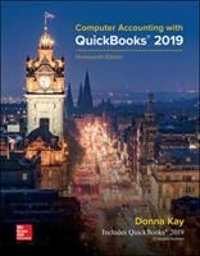Hello,
I need assistance with question 7, 8, 11, 13-20. I've been stuck on these for quite a while and I cannot seem to understand the answers on how to get it.
Thank you.
8/6/2020 CengageNOWv2 | Online teaching and learning resource from Cengage Learning Twenty metrics of liquidity, Solvency, and Profitability The comparative financial statements of Automotive Solutions Inc. are as follows. The market price of Automotive Solutions Inc. common stock was $60 on December 31, 20Y8. AUTOMOTIVE SOLUTIONS INC. Comparative Income Statement For the Years Ended December 31, 20Y8 and 20Y7 20Y8 20Y7 Sales $6,033,450 $5,558,890 Cost of goods sold (2,124,300) (1,954,360) Gross profit $3,909,150 $3,604,530 $(1,329,130) $(1,651,890) Administrative expenses (1,132,220) (970,150) Total operating expenses (2,461,350) (2,622,040) Operating income $1,447,800 $982,490 76,200 62,710 (384,000) (211,200) $1,140,000 $834,000 Selling expenses Other revenue and expense: Other income Other expense (interest) Income before income tax Income tax expense Net income (136,800) (99,800) $1,003,200 $734,200 AUTOMOTIVE SOLUTIONS INC. Comparative Statement of Stockholders' Equity For the Years Ended December 31, 20Y8 and 20Y7 20Y8 Balances, Jan. 1 20Y7 Preferred Common Retained Preferred Common Retained Stock Stock Earnings Stock Stock Earnings $900,000 $1,030,000 $4,218,475 $900,000 $1,030,000 $3,584,425 Net income 1,003,200 734,200 Preferred stock (12,600) (12,600) Common stock (87,550) (87,550) Dividends: Balances, Dec. 31 $900,000 $1,030,000 $5,121,525 $900,000 $1,030,000 $4,218,475 AUTOMOTIVE SOLUTIONS INC. https://v2.cengagenow.com/ilrn/takeAssignment/takeAssignmentMain.do?invoker=&takeAssignmentSessionLocator=&inprogress=false 1/4 8/6/2020 CengageNOWv2 | Online teaching and learning resource from Cengage Learning Comparative Balance Sheet December 31, 20Y8 and 20Y7 Dec. 31, 20Y8 Dec. 31, 20Y7 $1,193,960 $1,002,530 Temporary investments 1,807,080 1,661,330 Accounts receivable (net) 1,073,100 1,007,400 Inventories 803,000 613,200 Prepaid expenses 225,891 200,510 $5,103,031 $4,484,970 Long-term investments 3,014,867 1,701,974 Property, plant, and equipment (net) 5,280,000 4,752,000 $13,397,898 $10,938,944 $1,546,373 $2,150,469 $2,160,000 $0 2,640,000 2,640,000 Total long-term liabilities $4,800,000 $2,640,000 Total liabilities $6,346,373 $4,790,469 $900,000 $900,000 Common stock, $10 par 1,030,000 1,030,000 Retained earnings 5,121,525 4,218,475 $7,051,525 $6,148,475 $13,397,898 $10,938,944 Assets Current assets: Cash Total current assets Total assets Liabilities Current liabilities Long-term liabilities: Mortgage note payable, 8%, due in 15 years Bonds payable, 8%, due in 20 years Stockholders' Equity Preferred $0.70 stock, $50 par Total stockholders' equity Total liabilities and stockholders' equity Instructions: Determine the following measures for 20Y8. Round ratio values to one decimal place and dollar amounts to the nearest cent. For number of days' sales in receivables and number of days' sales in inventory, round intermediate calculations to the nearest whole dollar and final amounts to one decimal place. Assume there are 365 days in the year. 1. Working capital 2. Current ratio 3. Quick ratio $ 3,556,658 3.3 2.6 https://v2.cengagenow.com/ilrn/takeAssignment/takeAssignmentMain.do?invoker=&takeAssignmentSessionLocator=&inprogress=false 2/4 8/6/2020 4. CengageNOWv2 | Online teaching and learning resource from Cengage Learning Accounts receivable turnover 5.8 5. Days' sales in receivables 6. Inventory turnover 7. Days' sales in inventory 62.9 3 137.97 8. Debt ratio 9. days 47.3 days % Ratio of liabilities to stockholders' equity 0.9 10. Ratio of fixed assets to long-term liabilities 11. Times interest earned 12. Times preferred dividends earned 13. Asset turnover 14. Return on total assets % 15. Return on stockholders' equity % 16. Return on common stockholders' equity % 17. Earnings per share on common stock 18. Price-earnings ratio 19. Dividends per share of common stock 20. Dividend yield 1.1 3.97 79.6 times times $ $ % Feedback Check My Work 1. Subtract current liabilities from current assets. 2. Divide current assets by current liabilities. 3. Divide quick assets by current liabilities. Quick assets are cash, temporary investments, and receivables. 4. Divide net sales by average accounts receivable. Average Accounts receivable = (Beginning Net Accounts Receivable + Ending Net Accounts Receivable) 2 5. Divide average accounts receivable by average daily sales. Average Accounts receivable = (Beginning Net Accounts Receivable + Ending Net Accounts Receivable) 2 Average daily sales are net sales divided by 365 days. 6. Divide cost of goods sold by average inventory. Average Inventory = (Beginning Inventories + Ending https://v2.cengagenow.com/ilrn/takeAssignment/takeAssignmentMain.do?invoker=&takeAssignmentSessionLocator=&inprogress=false 3/4 8/6/2020 CengageNOWv2 | Online teaching and learning resource from Cengage Learning Inventories) 2 7. Divide average inventory by average daily cost of goods sold. Average Inventory = (Beginning Inventories + Ending Inventories) 2 Average cost of goods sold are cost of goods sold divided by 365 days. 8. Divide total liabilities by total assets. 9. Divide total liabilities by total stockholders' equity. 10. Divide property, plant and equipment (net) by long-term liabilities. 11. Divide the sum of income before income tax plus interest expense by interest expense. 12. Divide net income by preferred dividends [Preferred stock par value x dividend per preferred share]. 13. Divide net sales by average property, plant & equipment, . Average PPE = (Beginning PPE + Ending PPE) 2 14. Divide the sum of net income plus interest expense by average total assets. Average total assets = (Beginning Total Assets + Ending Total Assets) 2 15. Divide net income by average stockholders' equity. Average stockholders' equity = (Beginning Stockholders'Equity + Ending Stockholders'Equity) 2 16. Divide net income minus preferred dividends [Preferred stock par value x dividend per preferred share] by average common stockholders' equity. Common Stockholders'Equity = Common Stock + Retained Earnings Average Common Stockholders'Equity = (Beginning Common Stockholders' equity + Ending Common Stockholders'Equity) 2 17. Divide net income minus preferred dividends [Preferred stock par value x dividend per preferred share] by common shares outstanding (common stock par value). 18. Divide common market share price by common earnings per share (use answer from requirement 17). 19. Divide common dividends (from Statement of Stockholders Equity) by common shares outstanding (common stock par value). 20. Divide common dividends per share (use answer from requirement 19) by market share price. https://v2.cengagenow.com/ilrn/takeAssignment/takeAssignmentMain.do?invoker=&takeAssignmentSessionLocator=&inprogress=false 4/4







